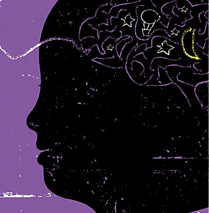Maybe you’ve heard of Doris Duke. Doris was an heiress, a social gadfly in Newport, Rhode Island’s society and, in the last years of the Gilded Age, as eccentric a human being as you were likely to find on Bellevue Avenue—or maybe anywhere.
While Doris wasn’t what you’d call a recluse, she didn’t have much patience with trespassers. Rough Point, the mansion she called home, was an obvious target—as was every other mansion in Newport—for thieves and cat burglars looking to sneak off with the cutlery, a diamond necklace or two, or perhaps a rare Monet or Degas.
Thus, the sign she chose to adorn her front gate: “Warning: Guard Dogs. Do Not Enter Without Protective Headgear.” No polite request to please refrain from relieving her of her personal fortune. Hell no. Instead, she went for the, um, jugular.
Doris might have been many things, but what that sign on her gate tells me is that she had a creative side to her, one that few of us know and that I call “The Eccentric Spark.” Simply put, it’s a creative subset that taps into the weird and the off-kilter, resulting in offbeat ideas that defy categorization.
Not that we should be surprised by that. A lot of wealthy people are eccentric.
Howard Hughes spent most of his life trying to avoid germs. He would sometimes spend hours sitting in a chair in the middle of a sterile white room as far from the outside, “infected” world as he could. He was terrified of flies. He wore tissue boxes on his feet to protect them. He burned his clothing if someone near him became ill. Toward the end of his life, he lay naked in bed in darkened hotel rooms in what he considered a germ-free zone.
You might remember Dean Kamen, the incredibly prolific and creative inventor of the Segway scooter. As far as anyone can tell, Dean dresses almost exclusively in denim. In itself, not all that weird. But Kamen also presides over—along with his Ministers of Ice Cream, Brunch and Nepotism—the Connecticut island kingdom of North Dumpling, which has “seceded” from the United States and has its own currency in units of pi. Visitors are issued a visa form that includes spaces on which to note identifying marks on both their faces and buttocks.
The Eccentric Spark.
So, what about it? Are eccentricity and the creative spark connected? And if they are, why?
The answer might lie with Mary Rocamora. Mary runs the Rocamora School in Los Angeles for gifted grownups. She has been counseling accomplished writers, actors and other creative professionals for more than 24 years. She chooses to wear unconventional clothing, like shoes hand-painted with colorful designs and coveralls she makes herself.
“I don’t want to be perceived as anything other than a sort of kid,” she says. “I don’t want clients to see me as anything other than a peer, and, if anything, to see me as some kind of a fruitcake that they could laugh about—and they like to do that. It’s not that I’m less esteemed or respected, but when they think of me, they think of all this nuttiness, and it gives them a giggle.”
And there it is.
The link that I’m convinced explains why some of our most enormously creative people are drawn to what most of us would consider bizarre and weird behavior. It’s our sense of loss of the time in our lives when we were at the height of our creative powers. In some ways, whether we realized it or not, we all thought that the sun could be blue or zebras could have pink and purple stripes or that Wonderland was a real place.
But of course, as in the book The Polar Express, we grow up, and before we know it, we can’t hear the bells anymore.
We’ve decided that if we allow the quirky in us to disappear, if we let our oddball selves shrivel up like a raisin in the August sun, then we will sure as hell end up a shadow of what we used to be creatively. The creative spark will be extinguished once and for all.
And so we dress funny. We swear up and down that faeries are real. We live in strange houses. We name our children after Roman gods. We cling to our eccentricity because if we don’t, our creative superpowers will be lost forever. Imaginations that once roamed freely through the world will go dark and silent. We’ll see only what most grownups see.
Which isn’t very much at all. ca












